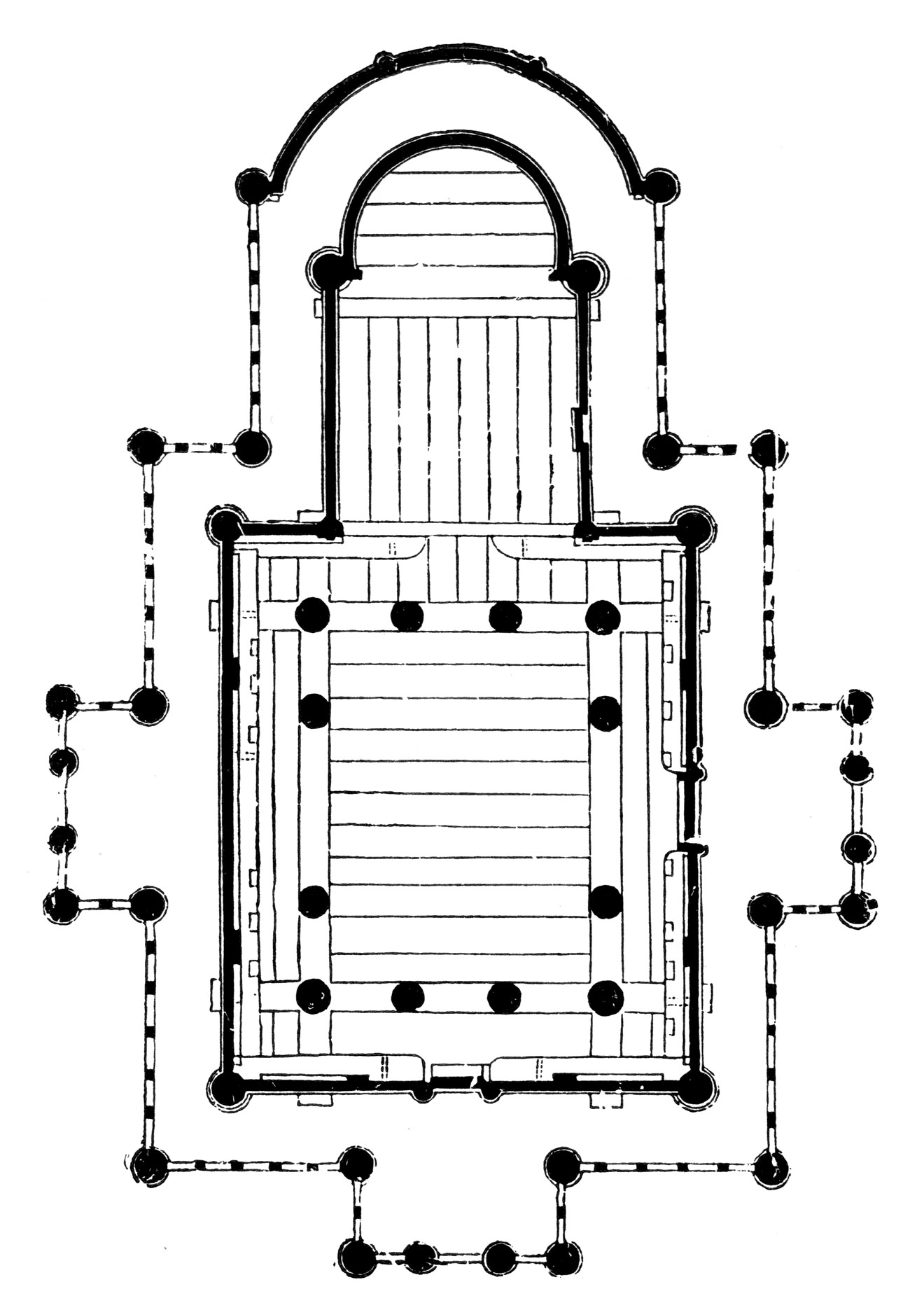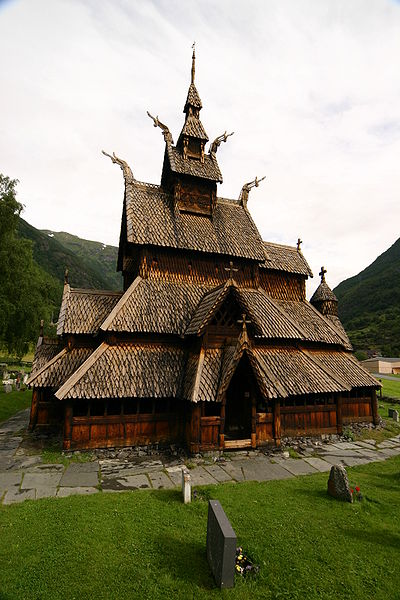"What is the house of Eorl but a thatched barn where brigands drink in the reek, and their brats roll on the floor among the dogs?"
--JRR Tolkien, The Lord of the Rings: The Two Towers (Book III, Chapter 10).
Thus spoke Saruman the wizard, after King Theoden had seen through his lies and told him to take a running jump, neatly articulating some of the more snobbish views of early English ('Anglo-Saxon')* culture in general and architecture in particular. Does timber architecture deserve this image?
There are no surviving drawings of early English buildings, and the written descriptions in sources such as Beowulf are stronger on poetic mood than on architectural detail, so the main evidence comes from archaeology. Herein lies an immediate problem; wood is a perishable material and rarely survives well in the ground. Usually all that is left of a timber building for archaeology to find is the ground plan, identified by post-holes and/or foundation trenches. Occasionally waterlogging has preserved some of the timber foundations, or if the building was destroyed by fire some of the charred timbers may have survived (charcoal being less prone to decay than wood), but even these favourable conditions usually preserve only the lower levels of the building.
Experimental archaeology, in which buildings are reconstructed using estimates of the techniques and materials available in the past, is invaluable for testing hypotheses about construction design and methods. It has provided a wealth of information about early English timber construction, especially for comparatively small buildings, such as the sort of houses and outbuildings that might have been occupied by a freeman farming family. Examples can be seen at West Stow near Bury St Edmunds in Suffolk, and Saxon House, Lincolnshire (pictures available on the links).
There is a tendency to assume that bigger buildings, such as the large high-status halls identified at sites such as Yeavering in Northumberland, were a sort of giant version of the smaller houses reconstructed at sites like West Stow. In the absence of evidence for their superstructure, this is indeed the simplest explanation. Brian Hope-Taylor's suggested reconstruction of the great hall at Yeavering follows this model (various other reconstructions, together with lots of useful information, available on the same site - it's well worth clicking round the links). But Occam's Razor isn't always correct.
The stave churches of Norway beautifully illustrate both the problem and the possibilities that can be achieved with timber architecture.
This is the ground plan of Borgund stave church in Norway (north-east of Bergen), built in 1180 and not substantially modified since.

Borgund stave church ground plan
From Wikimedia; public domain image.
Doesn't look very complicated, does it? It's not very difficult to imagine a thatched barn of some sort on top of this, maybe a sort of central square hall with a few annexe-y bits added on round the sides.
Here is what it really looks like.

Borgund stave church
From Wikimedia under Creative Commons rules
For all that one is supposed to be able to see the universe in a grain of sand, I think most of us would have real difficulty deducing this sophisticated structure from its ground plan.
This is not to argue that high-status Anglo-Saxon halls such as Yeavering resembled stave churches, although if I were going to imagine Heorot** I can think of worse places to start. Absence of evidence is just that. It's more a reminder that timber architecture can be just as sophisticated and just as spectacular as masonry, and that we shouldn't be blind to the possibilities.
West
Stow
Yeavering
Borgund,
Norway
*Although Tolkien's Rohirrim clearly have features in common with the early English, not least their language and their names, they should not be taken as a direct counterpart. Tolkien famously disliked allegory.
**Heorot is the great king Hrothgar's magnificent feasting hall in Beowulf,
although I expect that if you found your way here you knew that already.